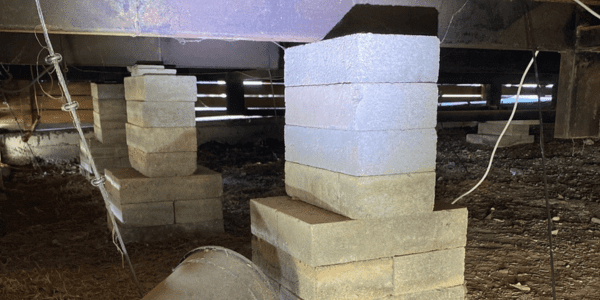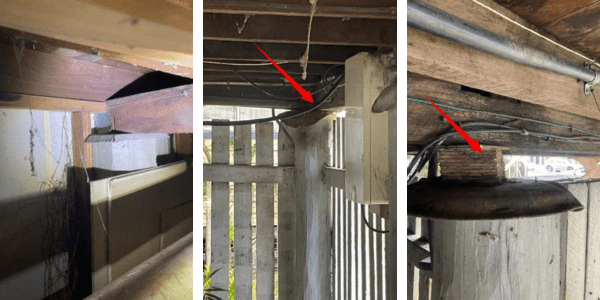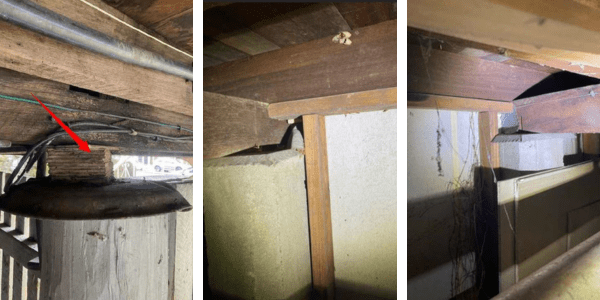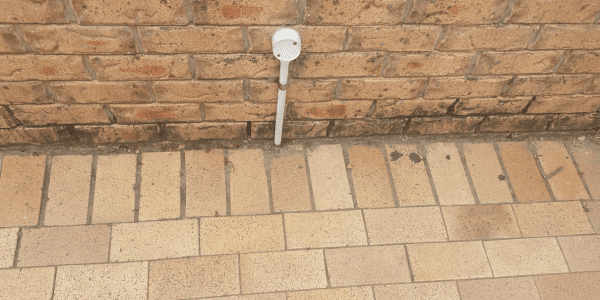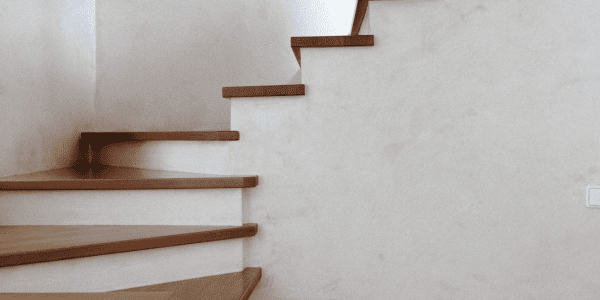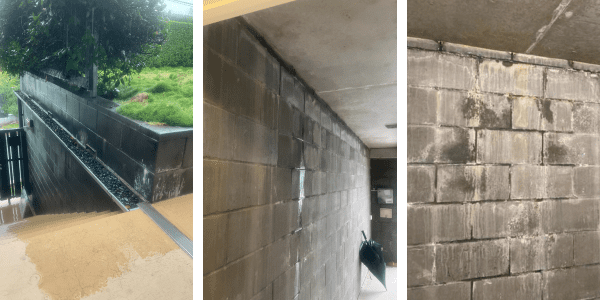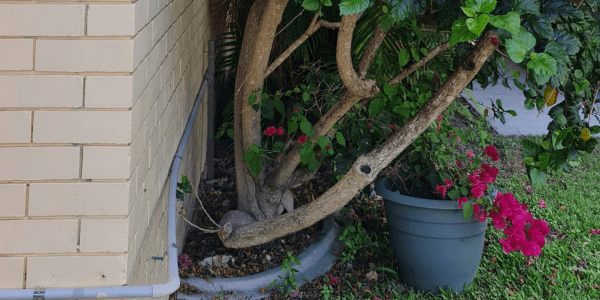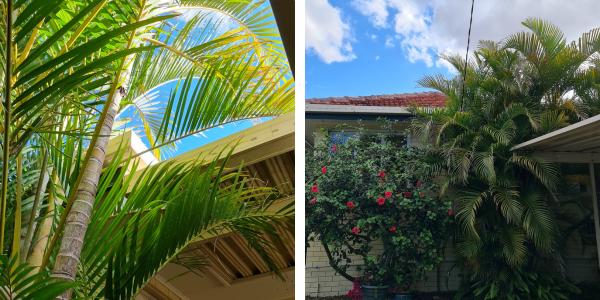Shoddy Workmanship Found During Building Inspection
Common defects due to shoddy workmanship
Shoddy workmanship is an unfortnate reality of the building industry. Whether it's done by licensed builders or home renovators, it's not unusual for us to see these common defects during building inspections.
Bent or damaged ant caps
All buildings must have some form of termite management system to protect them from subterranean termites.
One form of solution is ant caps. They are metal barriers inserted between floor framing timber and house stumps.
They are not designed to prevent termite entry.
Instead, they are designed to prevent termites from travelling up stumps and pillars unseen. Termites must travel around the cap and thus expose themselves.
However, if they are broken or damaged then they cannot perform their role effectively.
During renovations, construction may occur that damages or bends these caps.
Such renovations are an example of shoddy workmanship.
Destroying ant caps prevents termites from being detected.
Not being able to see termites makes it much more likely that they will be able to do far more damage before they are found and treated.
If your inspector finds a damaged ant cap, you should get them fixed immediately.
Building over ant caps
Similarly, placing timber over ant caps is another sign of shoddy workmanship.
When wood is placed up against a post and ant cap, this allows termites to travel undetected through the wood and bypass the ant cap.
Mistakes such as this one are most common when renovations are done.
This has the same effect of damaging the ant cap, as the result is the same.
Ultimately, your home will be made less safe from termites.
Obstructing weep holes
Weep holes are tiny gaps left in brickwork or masonry of external walls.
These holes are vitally important as they provide drainage and ventilation for your home.
When these weep holes are covered up, this prevents water from escaping and can lead to dampness, rot, mould and poor air quality inside the home.
To ensure weep holes are functioning properly, you should not obstruct them at all.
One of the more common ways weep hopes are obstructed is when decks are built over them.
Alternately, they can become covered when the exterior walls are rendered.
When rendering is done, weep holes should still be left visible. Failure to do this is evidence of shoddy workmanship.
No handrails on stairs
When examining a flight of stairs, the handrail/balustrade is of vital importance.
A handrail is required on all flights of stairs that rise 1 metre or more off the ground.
The Building Code of Australia states that stairs must have one handrail unless there is a fixed structure such as a wall within 10cm of the stairway.
Similarly, if the stairs are wider than 1 metre, there must be handrails or fixed structures on both sides.
Any attempt to circumvent by a builder or renovator is shoddy workmanship.
External ground higher than inside
When the external finished surface around the slab is higher than the slab, this prevents groundwater from diverting away from the home.
Generally, you want the external ground to be lower than the inside of your home. This is because it can create drainage issues.
Water runoff can roll down and collect in pools and puddles in and around your dwelling.
Instead, you should ensure that runoff is able to drain safely away from your property.
If this fault is found, consult with a relevant expert as soon as possible.
Garden placed next to building elements
When landscaping, spacing is key. The Queensland Building and Construction Commission have suggested common sense guidelines for landscaping and gardens.
Most importantly, trees and gardens be kept away from the house.
This is because gardens need to be watered. This causes moisture to build up next to the house and cause mould and rot to external walls.
Furthermore, gardens are a key area where termites build nests.
Having your garden touching your external walls allows for termites to have easier access to your home.
Trees too close to the home
Furthermore, as tree roots grow they can warp the ground, causing the pavement to shift and become a trip hazard.
Trees that grow over your roof can also drop excessive leaves into your gutters.
Overall, if these issues exist on your property it was because those involved with landscaping did not plan accordingly or follow common sense guidelines.
Contact us today
These examples highlight the importance of getting a Building Inspection Report for any property you are considering purchasing or for your current home if you suspect any shoddy workmanship.
We have been servicing Brisbane, Redland Bay, Moreton Bay, Gold Coast, the Scenic Rim, Sunshine Coast, Ipswich and Logan since 2009.
Contact us on 07 3807 0122 or via our website.

